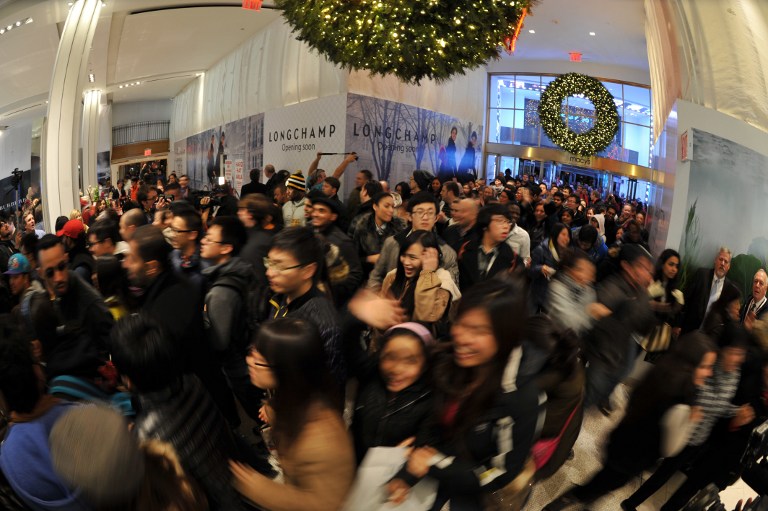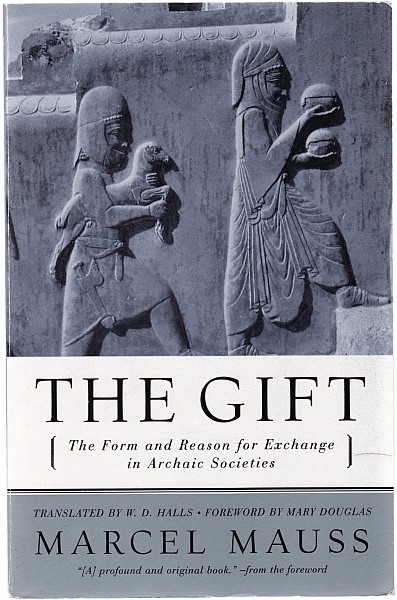
D. F. Sebastian
It’s a curious irony that Thanksgiving Day has become the welcome mat to usher in an extended season of commercialized holiday consumption. The shopping season starts with a bang as holiday shoppers sprint out of the blocks on Black Friday.
In years past, a détente had been struck between these two seemingly incompatible days. Black Friday, no matter how early in the morning it began, was careful not to cross the threshold of Thanksgiving Day. When it finally crossed that line, it did so slowly and with trepidation. Some retailers refused, and some customers bemoaned the trespassing. Though all of that may not ultimately have stopped the infringement, it was clear that moving from the early hours of Friday to the very day of Thanksgiving represented something significant. An invisible hurdle had been leaped crossing the divide between these previously distinct days. The existence of such a hurdle between these two days gives us an insight into our social imagination.
How can it be that activities deemed acceptable become unacceptable if carried out one day earlier? Such delineations of time and calendar may not be surprising in religious practices such as Lent or Ramadan. One hardly imagines, however, that this kind of ‘liturgical’ calendar exists in the whole of American society. Is it really possible that in the public imagination, such a stark segmentation of time exists? An answer to this question can be found by comparing our modern conception of Thanksgiving to ancient thanksgiving rites.
 In his seminal book The Gift, French sociologist Marcel Mauss examined the practice of gift giving in archaic economies. Mauss’s main inquiry was how gift giving in ancient economies involved much more than exchanging presents. His exploration of gifts, one of which is ‘Thanksgiving Ceremonies,’ gives us a window into their ancient social structure.
In his seminal book The Gift, French sociologist Marcel Mauss examined the practice of gift giving in archaic economies. Mauss’s main inquiry was how gift giving in ancient economies involved much more than exchanging presents. His exploration of gifts, one of which is ‘Thanksgiving Ceremonies,’ gives us a window into their ancient social structure.
Mauss claims that a gift must be received and that a return gift is subsequently obligated. This may sound far more like a business deal than a friendly exchange of gifts. Mauss is not, however, reducing gift giving to a mere economic transaction. Rather, he is pointing out that gift giving is working simultaneously in multiple realms. Gifts performed a broader social role than we might initially suspect. In fact, Mauss explains how in these communities, gifts established communal hierarchy, formed contracts, and completed economic transactions. Gift giving even contained a notable spiritual element. No action was purely social or spiritual eschewing the economic, or conversely, simply a business transaction void of any social or spiritual dynamic. Each and every social space overlapped and was inter-connected.
This brings us to Mauss’s examination of ‘Thanksgiving Ceremonies’ where the community went from house to house taking turns throwing banquets during the winter months. Hosting the thanksgiving banquet was a gift to all invitees. Thanksgiving rites were not simply a time of celebration or the opportunity for the host to give a ‘present’ to others in the community. The ceremony, like other gifts, performed multiple social functions: legal – binding and/or releasing contracts; economic – initiating or completing transactions; financial – serving as a form of debt or loan; spiritual – freeing or allowing the movement of spirits; social – establishing and maintaining hierarchy within and among communities. Gift giving and all other actions were not assigned simply to one social space. Again, all of these social realms were interrelated, coinciding, and working simultaneously. While we find it hard to understand how inviting someone over for dinner could hold a legal or financial dimension, this is a reflection of the constraints of our social imagination due to the architecture of the society in which we live. The contrast between the practices of modern and archaic thanksgiving rites gives us insight into the broader imagination behind how our society is constructed.
Consider again the current conundrum of Thanksgiving and Black Friday. With a lens toward the ancient overlapping of social spaces, it should be immediately evident how different that is from our modern social structure. Modern social spaces have been painstakingly separated. The sacred cannot touch the secular nor vice versa. This is obvious from the fact that while some argue that no distinction can actually be made between these two categories, these two categories are taken for granted in much of public discourse. The same separation is maintained between economics and family or the legal realm and spiritual experiences.

The modern social realm resembles the Thanksgiving plate of one who spends his or her entire meal ensuring that the different types of food do not touch. The cranberry sauce cannot be intermingled with the stuffing. Archaic communities, on the other hand, freely mixed every social space, from the broccoli soufflé and sweet potato casserole to grandma’s fresh apple pie and the corn pudding.
The initial shock and protest of Black Friday’s economics and business infringing upon the familial and friendship centered Thanksgiving, I suggest, was the recoil against the mixing of social spaces that had been so meticulously separated. The economic realm stepped out of its allotted space and infringed upon Thanksgiving’s territory. The gravy simply could not be allowed to run free all over the golden brown honey bun without recourse.
In considering our current societal preference to keep social spaces separate, two points of reflection seem warranted. Firstly, this exemplifies how certain social spaces are created and maintained as sacred as opposed to other mundane or secular spaces. Clearly the Thanksgiving-Black Friday divide involves two different types of social spaces. Marcel Mauss, whose description of gifts has led us to contemplate why we view certain social spaces as distinct, was influenced by his uncle, Emile Durkheim. Durkheim suggested that the sacred was nothing more than an idolized version of society itself. Instead of a society worshiping a god or gods existing outside of itself, it created an image to worship, which was ‘nothing more nor less than society transfigured and personified’ (The Elementary Forms of the Religious Life). Society worshiped a replication or performance of itself. The easiest version of oneself for any person to worship is a romanticized version. The same holds true for societies as a whole.
Thanksgiving functions as a ceremony for society to offer up a version of itself to be worshipped. The focus is on family, friends, and living with contentment and gratitude all the while shunning any form of commercialization (thus no presents are exchanged). This allows Americans to lift up an idealized version of themselves. Thanksgiving as a ritual protects that identity by sequestering a moment for remembrance and even reconstruction. The Thanksgiving routine has been quarantined to prevent infection from any other social practices. The allotted space and time for Thanksgiving are crucial in shaping the social identity. Its strict observance at a specific time and in a certain manner reflects a ‘liturgical’ calendar of sorts in the national imagination.
The original, nearly religious backlash against the infraction of this time by Black Friday, makes perfect sense when considered from this perspective. Black Friday’s encroachment upon the ritual of Thanksgiving threatens the ‘transfigured and personified’ character of society. The attributes of gratefulness, charity, and strong communal and familial bonds are faithfully performed in order for society to embody the best version of itself. To trample this performance with stampeding Black Friday shoppers could potentially alter the community identity. While shoppers are concerned about huge price reductions, the true cost may be nothing less than a tainted social identity. Thanksgiving is an important moment in the American ‘liturgy’ because it is inextricably linked to the transfiguration and personification of society. Thursday is as sacred as the social identity that it helps to create and maintain.
Secondly, the possibility of mixing social functions raises certain questions about economic ethics. Given the distinction made between certain spaces and times in the public imagination, has the economic arena been allowed to function without ethical oversight simply because it exists in its own social ghetto? Is it possible that our social structures have freed our economics from any obligations (familial, spiritual, or otherwise) so long at it does not venture beyond the borders of its assigned space?
In the timeless (save for the sound of dial-up internet) romantic comedy You’ve Got Mail, Kathleen Kelly (Meg Ryan) finds herself fighting to save her business from going bankrupt against her new competitor Joe Fox (Tom Hanks). And while Kathleen Kelly tries to convince herself of Fox’s mantra, “It’s not personal. It’s business,” her actions never reflect a belief in that principle. Her view of her business is not separated from other realms. It is familial, communal, relational, and perhaps spiritual. It is no wonder that the very last thing she envisions when scanning over her shop one final time before she closes her doors permanently is a childhood memory of herself dancing with her mother. Her business was personal. Joe Fox, on the other hand, does maintain a separation between personal and business realms. This leads him to attempt knowingly to develop a romantic relationship with Kathleen Kelly while simultaneously trying to put her out of business. For him, the two spheres are not connected. His personal care for Kathleen has no bearing on his attempt to put her out of business. Fox typifies the modern separation of social spheres, which allows him to be justified in actions that might be considered reprehensible if the social spaces were not viewed as discrete.
How often do we approach the decisions we make as business owners or managers or employees as simply economic questions, shielding ourselves from the possibility that those decisions are also communal, familial, legal, and spiritual? What types of practices would be protested if they visibly crossed the threshold of a purely economic realm and landed in the mudroom of another social space? The ethics of ancient economies were not established in a realm where exchanges conceived of as purely economic occurred. No such social space existed. Rather the general social ethic governed every action, because each action was at the same time social, spiritual, economic, legal, etc. Something considered unethical within the family realm would be considered equally unethical in what we consider economic space. The modern Thanksgiving tussle reveals that the ethics applied to the economic sphere are viewed differently when it remains in its ‘own’ social space than when it crosses boundaries into other spaces.
We would do well to contemplate whether such a haven from certain ethical standards is warranted due to an arbitrary division of imagined space and time. After all, what is more arbitrary than a random Thursday in the middle of November when America sits down to a turkey dinner? Considering archaic societies who mixed all sorts of social functions in the same actions may give us the ability to imagine our social spaces differently and reflect more closely upon the ethical demands we place on our business and economic practices. We need to digest that it simply may not be possible to eat the turkey without it mixing with the green bean casserole, stuffing, and all of the other fixings.
D. F. Sebastian is a licensed Certified Public Accountant who holds bachelors degrees in both Biblical Studies and Accounting from Evangel University in Springfield, Missouri and received a Masters of Arts in Religious Studies at Missouri State University with a thesis entitled “The Myth of a Secular Economy: Capitalism’s Unarticulated Theology.”
